
Catocala meskei, or Meske's underwing, is a moth of the family Erebidae. The species was first described by Augustus Radcliffe Grote in 1873. It is found in North America from Maine and Quebec west to southern Alberta and Montana, south to South Carolina in the east and at least Montana in the west.
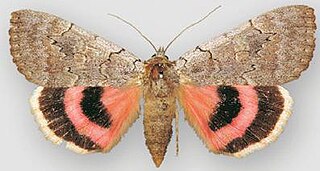
Catocala concumbens, the sleepy underwing or pink underwing, is a moth of the family Erebidae. The species was first described by Francis Walker in 1858. It is found in eastern North America, west across the southern half of the Prairie Provinces to eastern Alberta.

Catocala briseis, the Briseis underwing or ribbed underwing, is a moth of the family Erebidae. The species was first described by William Henry Edwards in 1864. It is found across the North American Boreal forest region from Newfoundland to the Pacific, south to Massachusetts and Pennsylvania.
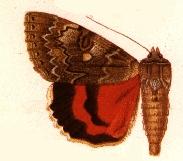
Catocala californica is a moth of the family Erebidae first described by William Henry Edwards in 1864. It is found in western North America from British Columbia and Alberta south through Washington and Oregon to California.

Catocala hermia, the Hermia underwing, is a moth of the family Erebidae. The species was first described by Henry Edwards in 1880. It is found throughout the Great Plains of North America, from southern Saskatchewan and Alberta south and west to Texas, Arizona and California.
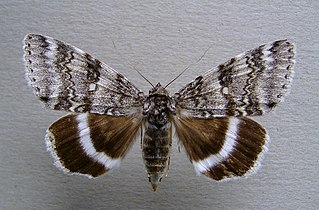
Catocala relicta, the white underwing or relict, is a moth of the family Erebidae. The species was first described by Francis Walker in 1858. It lives in southern Canada, from Newfoundland to Vancouver Island, south to Missouri, and Arizona.
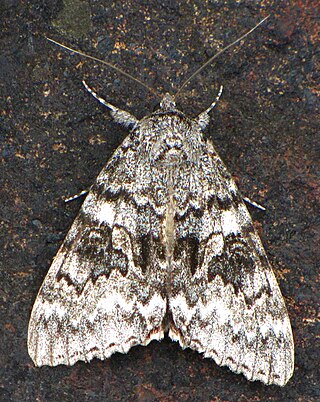
Catocala semirelicta, the semirelict underwing, is a moth of the family Erebidae. The species was first described by Augustus Radcliffe Grote in 1874. It is found in North America from Nevada, Colorado, Utah, California, and Nova Scotia south to Maine, west across Canada to British Columbia, and southward in the mountains.
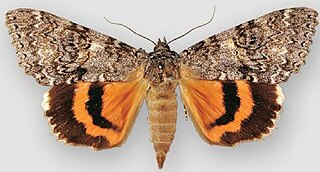
Catocala unijuga, the once-married underwing, is a moth of the family Erebidae. The species was first described by Francis Walker in 1858. It is found in North America from Newfoundland west to south central British Columbia, south to Kentucky and Missouri in the east, Colorado and Utah in the west.
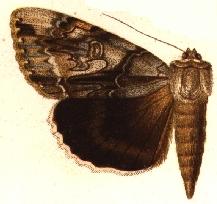
Catocala vidua, the widow underwing, is a moth of the family Erebidae. The species was first described by James Edward Smith in 1797. It is found in North America from southern Ontario, into Maine, New Hampshire and Connecticut, south at least to Tennessee, Georgia and Alabama, west to Texas and Oklahoma, and north to Wisconsin.

Catocala desdemona, the Desdemona underwing, is a moth of the family Erebidae. The species was first described by Henry Edwards in 1882. It is found in Utah and Arizona, ranging south into New Mexico and Texas, and onwards through Mexico up to Honduras.
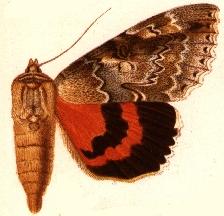
Catocala marmorata, the marbled underwing, is a moth of the family Erebidae. The species was first described by William Henry Edwards in 1864. It is found in the United States from Vermont to South Carolina and west to Indiana and Illinois.

Catocala faustina is a moth of the family Erebidae. It is found from Colorado west to California and north through Washington to British Columbia. It has also been reported in Idaho, Montana, Nevada, Oregon and Utah.
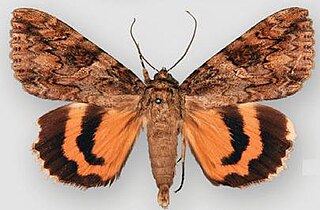
Catocala irene, or Irene's underwing, is a moth of the family Erebidae first described by Hans Hermann Behr in 1870. It is found in the western United States in Utah and California and Nevada.
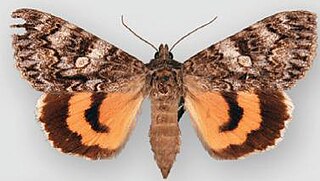
Catocala allusa or Catocala faustina allusa is a moth of the family Erebidae. It is found from British Columbia, south through Washington to northern California. It is also found in Oregon and possibly western Nevada.
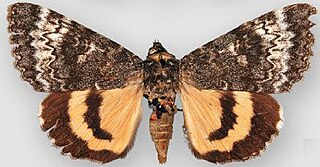
Catocala grotiana, or Grote's underwing, is a moth of the family Erebidae. The species was first described by James S. Bailey in 1879. It is found in the US from Arizona, north through Utah into Colorado. It has also been spotted in Washington and in the western US north and east of California.
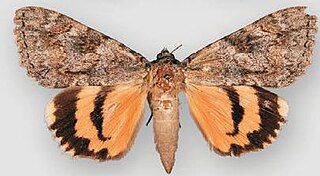
Catocala jessica, the Jessica underwing, is a moth of the family Erebidae. The species was first described by Henry Edwards in 1877. It was described in the United States from Arizona through Colorado to Illinois and California.

Catocala pacta is a moth of the family Erebidae. It is found from southern Sweden, east to Finland, Poland, the Baltic states, to the Ural and the Amur regions south to Tibet.

Catocala deducta is a moth in the family Erebidae first described by Eduard Friedrich Eversmann in 1843. It is found in Russia.
Catocala detrita is a moth in the family Erebidae first described by Warren in 1913. It is found in the Ural Mountains of Russia.

Catocala lupina is a moth in the family Erebidae first described by Gottlieb August Wilhelm Herrich-Schäffer in 1851. It is found from south-eastern Europe to south-western Siberia, Asia Minor and Transcaucasia.













